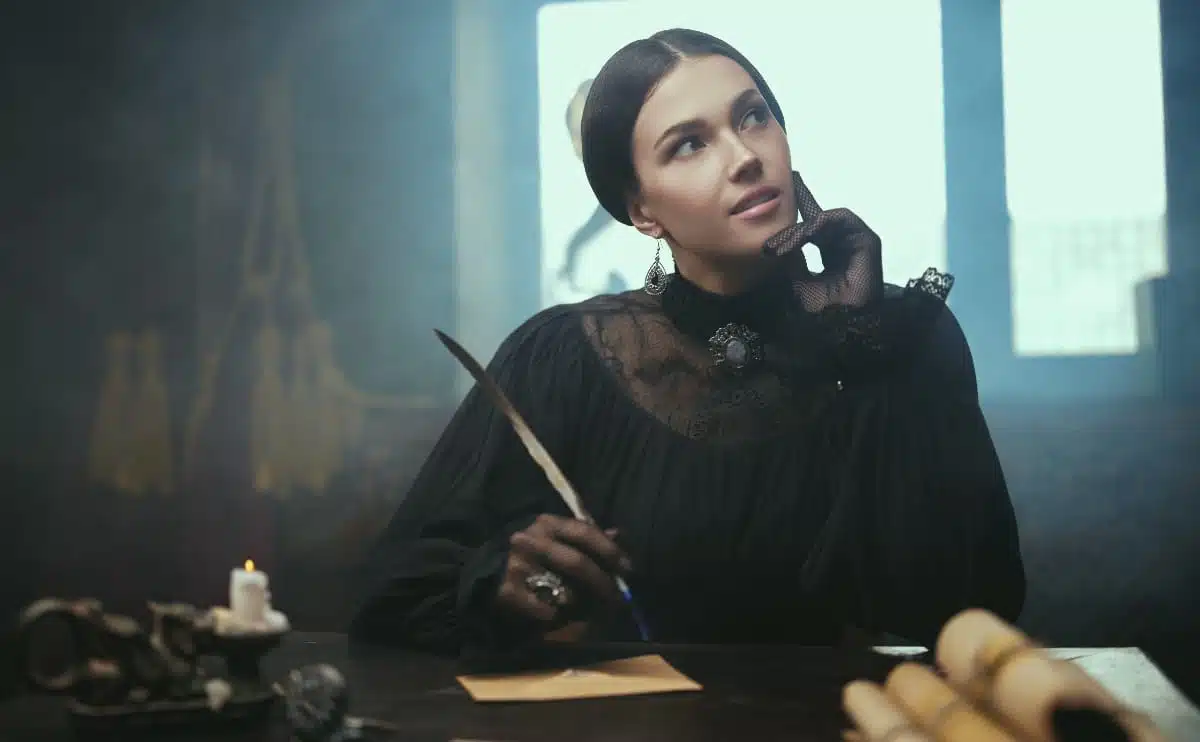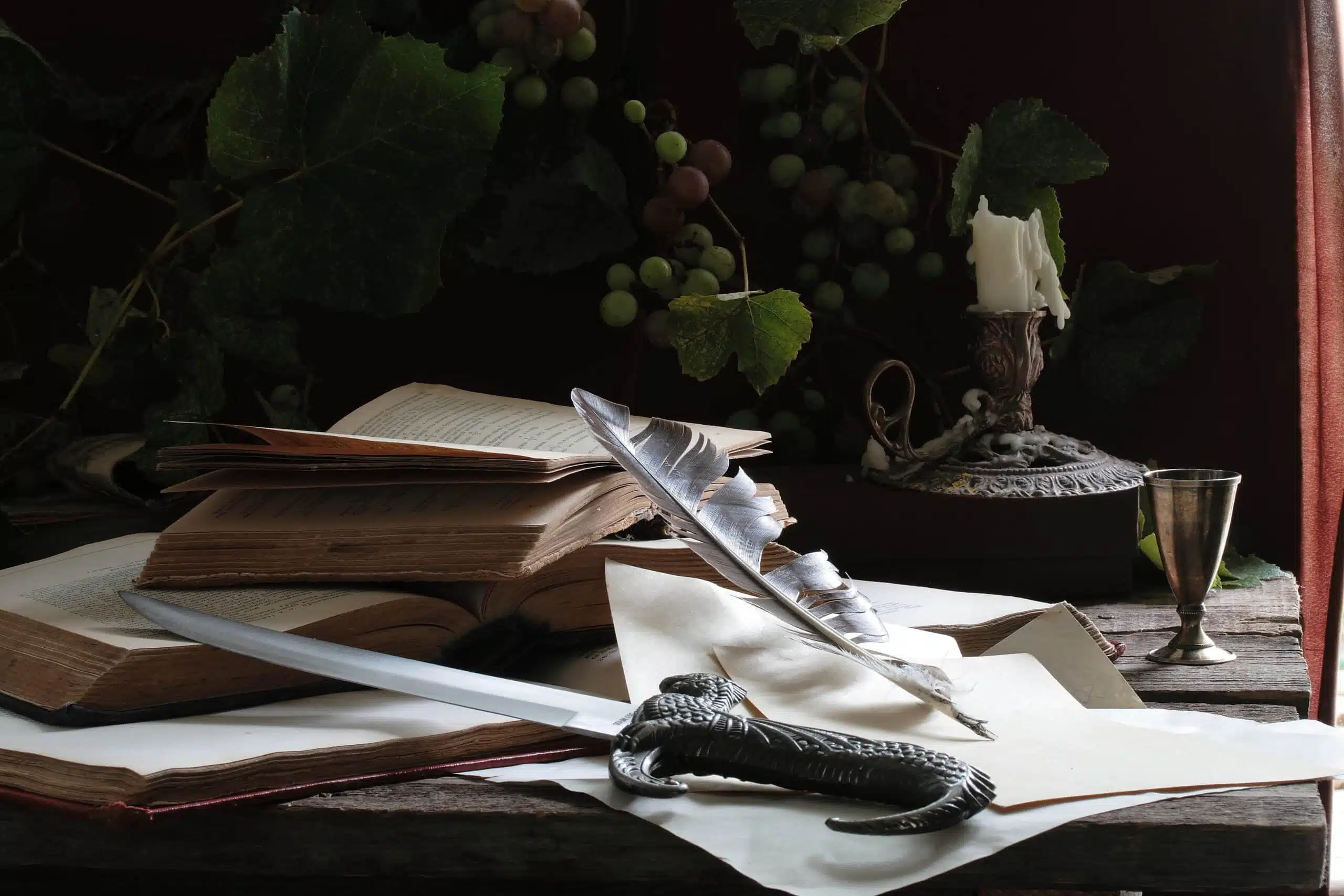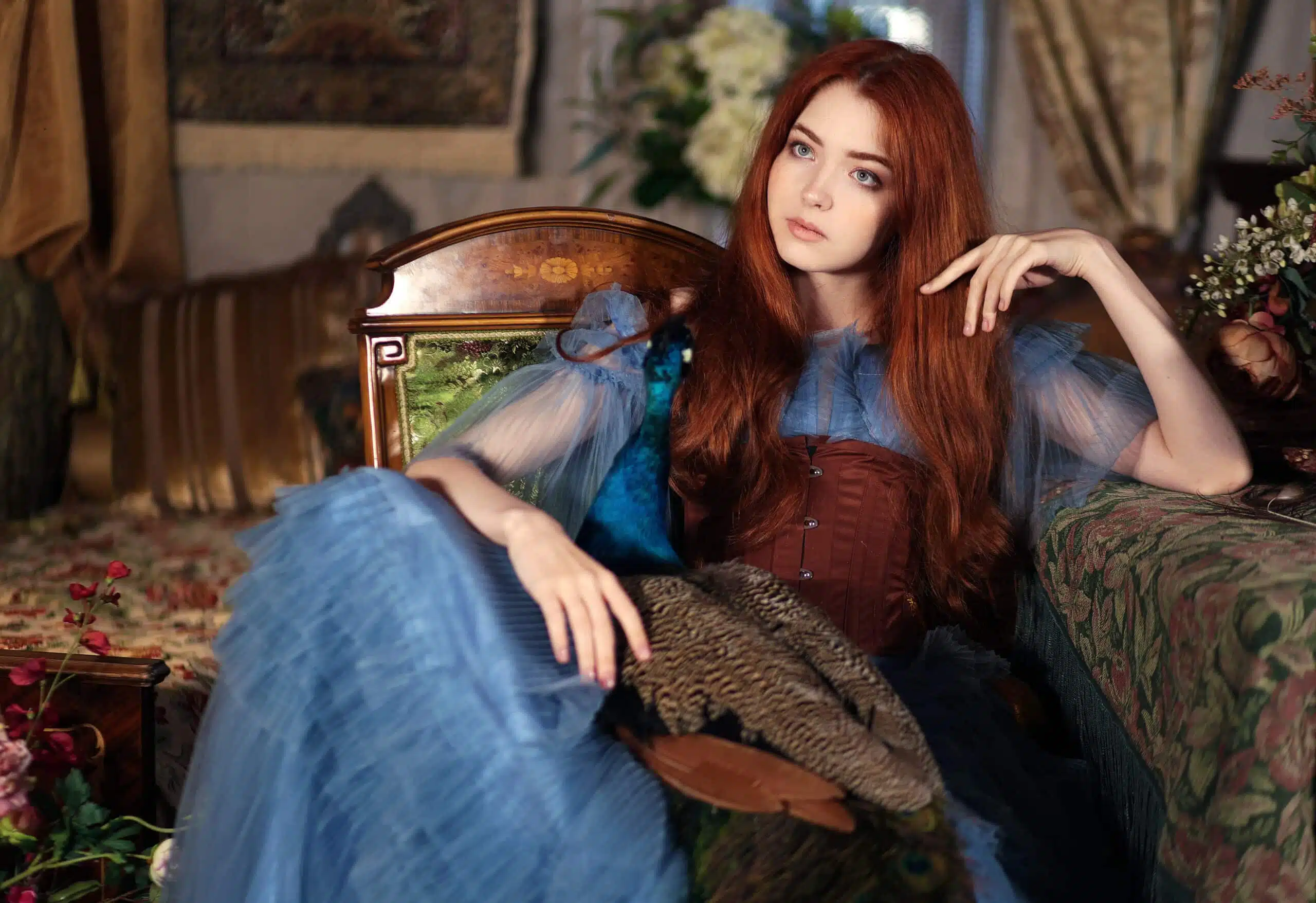Here’s what the Skeltonic Verse poetry form is:
Invented by 19th-century poet John Skelton, the Skeltonic verse is a verse form that uses short lines and extensive monorhyme to create a unique rambling effect that makes the poem feel like it’s tumbling down the page.
This led to another modern nickname for the form: “Tumbling verse.”
So if you want to learn all about the Skeltonic Verse poetry type, then you’ve come to the right place.
Let’s jump right in!

Forms of Poetry: Skeltonic Verse

The Skeltonic verse, also known as tumbling verse, is appropriately named after John Skelton, the poet who first pioneered the form.
It’s written in a unique style that seems to tumble down the page, using long verses with short lines and plenty of rhyme.
This form is interesting in that it’s really more of a style than a form since none of its techniques and lengths are measured numerically.
A practiced eye knows the Skeltonic verse at a glance, though, so whether it’s better to call this a form or a style really comes down to preference.
Basic Properties of Skeltonic Verse

| Rhyme Structure | Flexible monorhymes |
| Meter | None |
| Origin | John Skelton (19th century) |
| Popularity | Scattered |
| Theme | Varies |
How Is Skeltonic Verse Structured?

The Skeltonic verse uses short lines with only two or three stresses per line (usually two) and no stanza breaks.
The visual effect this has on the page led to the form’s modern nickname of “tumbling verse” since the poem seems to tumble down the page.
Monorhymes on the end sounds are expected, but there’s no set number of rhymes.
Instead, the poem will rapidly jump from one series of monorhymes to the next without warning, usually whenever the poet runs out of ideas for a rhyme sound.
Depending on how the poem is written, this may result in a poem that feels fun and fluid or a poem that feels suffocating and tense.
The difference between the two generally comes down to tone and word choice.
Either way, the Skeltonic verse is interesting in that its rules aren’t very concrete but still lead to an experience that’s immediately distinguishable from all other poem forms.
The frantic pace of the poem and its telltale shape on the page gives it away instantly.
Example of a Skeltonic Verse

The Red Bird
The red bird
won’t say a word
that can be heard
until you stir
its drink.
If you think
it will shrink
away today,
let me say,
it shan’t away
so quickly.
It strictly
likes to soar
just a bit more,
shore to shore,
than you’d guess.
No less
than the best
for red wings.
It sings
of golden rings
of shiny things,
but never lands
in the hand.
The first thing you’ll notice about the example is the unmistakably narrow shape.
Between that and the focus on monorhymes, Skeltonic verse poems are immediately obvious, even to a novice.
Despite their flexibility, they can actually be quite tricky to work with.
Tips for Writing Skeltonic Verse

It would not be wise to go into a Skeltonic verse poem with any static plans in mind.
This form will test your flexibility and wit, demanding that you be able to shift gears quickly from one line to the next.
There’s very little room to set up any kind of meaningful narrative, but you may find that leaning into random thoughts instead of away from them improves the poem.
Treat Skeltonic verse as an exercise or a sort of word game.
If you go into it with ambition, thinking you’re going to bend the form around some modern-day epic, you’ll probably be crushed under your own pride.
That’s just not where Skeltonic verse shines.
As the name “tumbling verse” might imply, the poem works its magic when you just let the thoughts tumble out of your head.
Maybe they’ll be meaningless and meandering.
That’s fine, as long as you have fun.
If you’re having fun writing the poem, there is a good chance readers will have fun reading the poem.
And for the Skeltonic verse, that’s kind of the whole point.

Now, if you do want to try to instill some sense of narrative or continuity in your poem, then by all means go for it.
But understand that you’re setting yourself up for an intense challenge since you’ve only got a few syllables to work with per line.
Once your lines have four or more stresses regularly, you’re no longer writing Skeltonic verse.
I personally find that the form works well with simple images.
For the example poem, I purposely chose an image that I knew I could rhyme with, “The red bird.”
That line was the only concept I had for the poem, and everything else was the result of freestyling as I went along
Different writers do have different processes, but I personally think that just stumbling freely from beginning to end suits this particular form perfectly.
Poet’s Note

When I saw the phrase “Skeltonic verse,” my first guess was that this form would be related to Robin Skelton, just from overexposure to his name over the course of this series.
I didn’t think “Skelton” was a very common name, but here we are talking about an entirely different writer.
Go figure.
Comprehensive Collection of Poetry Forms: Craft Words Into Art

Dare to traverse the entire spectrum of poetic forms, from the commonplace to the extraordinary?
Venture from the quintessential Sonnet to the elusive Mistress Bradstreet stanza, right through to the daunting complexity of Cro Cumaisc Etir Casbairdni Ocus Lethrannaigecht.
For those with a zeal to encounter the full breadth of poetry’s forms, this invitation is yours.
Start exploring the vast universe of poetic ingenuity with our comprehensive array of poetry forms right now!
